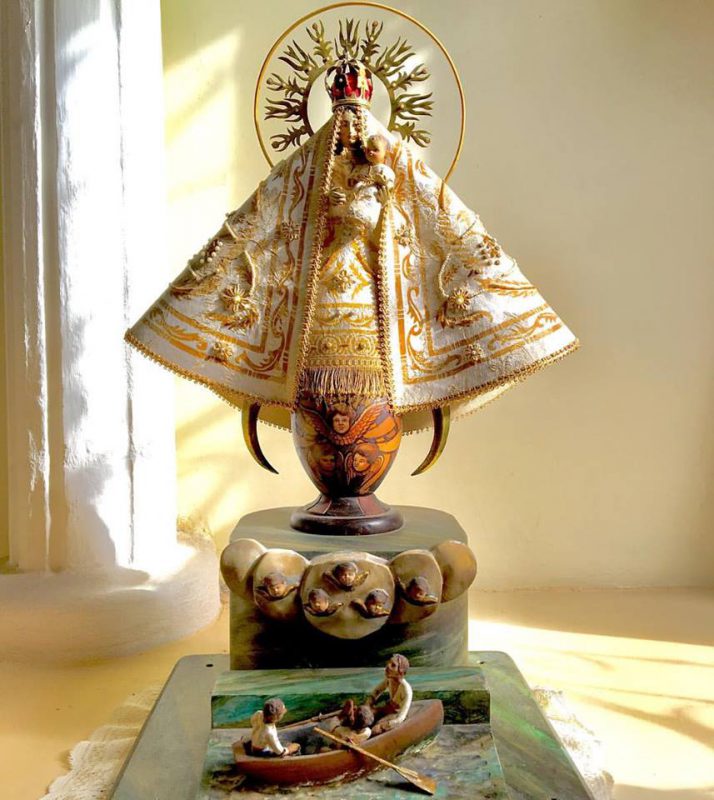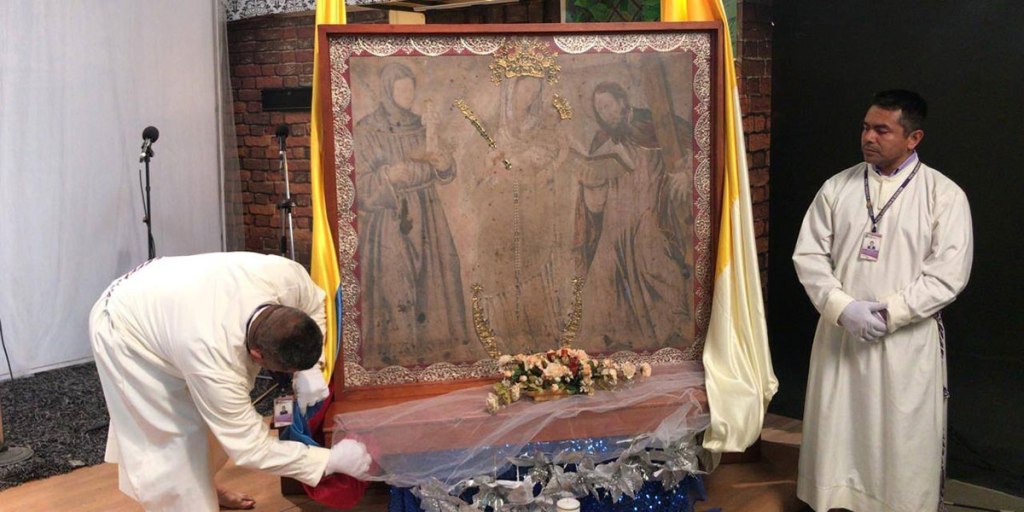On his trip to Mongolia this September 2, Pope Francis recognized the presence of Our Lady, who has made herself present to the country in a unique way.
Before his meeting with the leaders of the small Catholic community in the country — made up of eight parishes and led by the Church’s youngest cardinal — the Holy Father had the opportunity to meet an elderly woman who found a statue of Mary in the garbage.

In his address, the Pope noted how he was “pleased to discover” this story: that Mary
“wished to give you a tangible sign of her gentle and caring presence by allowing a likeness of herself to be found in a landfill. In a place for refuse, this beautiful statue of the Immaculate Mother appeared. Herself free and undefiled by sin, she wanted to draw so close to us as to descend to the dregs of society, so that from the filth of a rubbish heap the purity of the holy Mother of God could shine forth.”
The image, who Pope Francis has named “Heavenly Mother,” is reverenced in the cathedral. On December 8, 2022, the feast of the Immaculate Conception, the country’s only bishop, Cardinal Marengo, consecrated Mongolia to her.
Some more trash
It seems, in fact, that Mary delights in allowing herself to “be found,” even at times in places of muck — not unlike her Son born in a stable.
One can recall the story of Our Lady of Pompeii, much beloved by Pope Francis and other popes and holy people.
In the fascinating story of how Bartolo Longo, the satanist turned evangelizer, acquired the revered image of Our Lady, we again find garbage. Firstly he bought the painting from a junk store for a minimal sum. Then in sending it to Pompeii via a local transport, the carrier didn’t realize what was in the package and tossed it onto a load of garbage. Thus the picture arrived at the chapel.
Floating along
Then, the story of Our Lady of Charity in Cuba comes to mind. While she was in the ocean, and not a landfill, again we see the case of simple people finding the Mother and devotion arising around the image.
She was found in the year 1612.
According to three witnesses — two indigenous men and an African-Cuban 10-year-old boy — the image was found suddenly floating in the water of the Bay of Nipe. A board fixed to the image read “I am the Virgin of Charity.” The image is some 33 inches tall, and she is often depicted with those who discovered her, in their boat.

Discarded and restored
Another story of being rescued from debris comes from Colombia: Our Lady of Chiquinquirá.
As Philip Kosloski explains here:
During the 16th century, Spanish painter Alonso de Narvaez created a portrait of the Virgin of the Rosary. To create the image he used pigments from the soil, herbs and flowers of the region. On either side of the Virgin Mary are Saint Anthony of Padua and Saint Andrew the Apostle, the personal patrons of the colonist, Don Antonio de Santana, and monk, Andrés Jadraque, who commissioned the painting.
In 1562, the image was displayed in a chapel. Over time, and with water damage from the chapel’s leaky roof, the painting’s natural pigments faded, until it became almost unrecognizable. By 1577, the image was discarded in an abandoned oratory in the town on Chiquinquira.
A few years later, in 1585, the image was discovered by a laywoman, Maria Ramos, who had taken it upon herself to clean and restore the oratory. According to tradition, on December 26, 1586, the image was miraculously renewed. It suddenly received back all its colors and was restored to its original glory.




